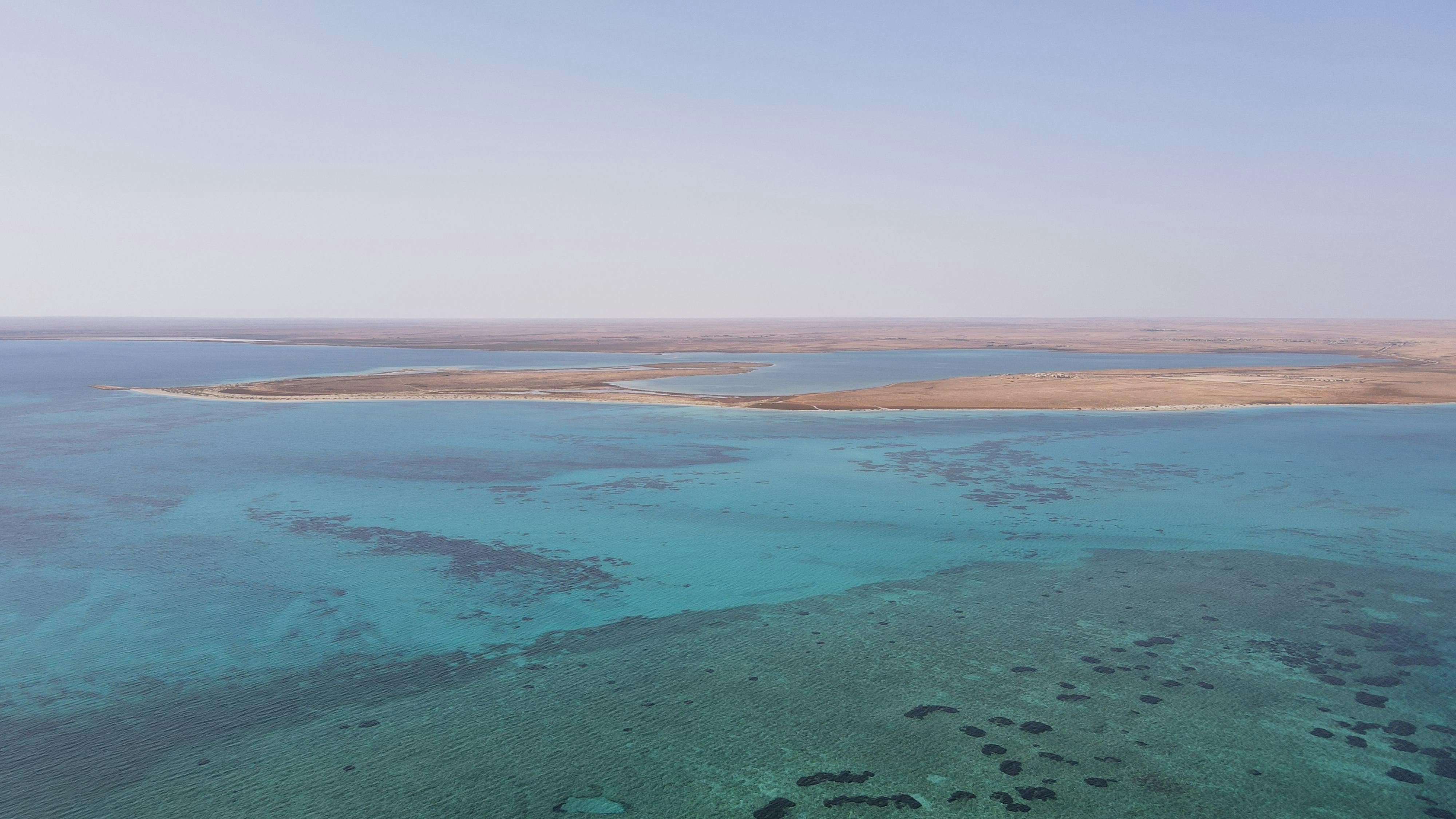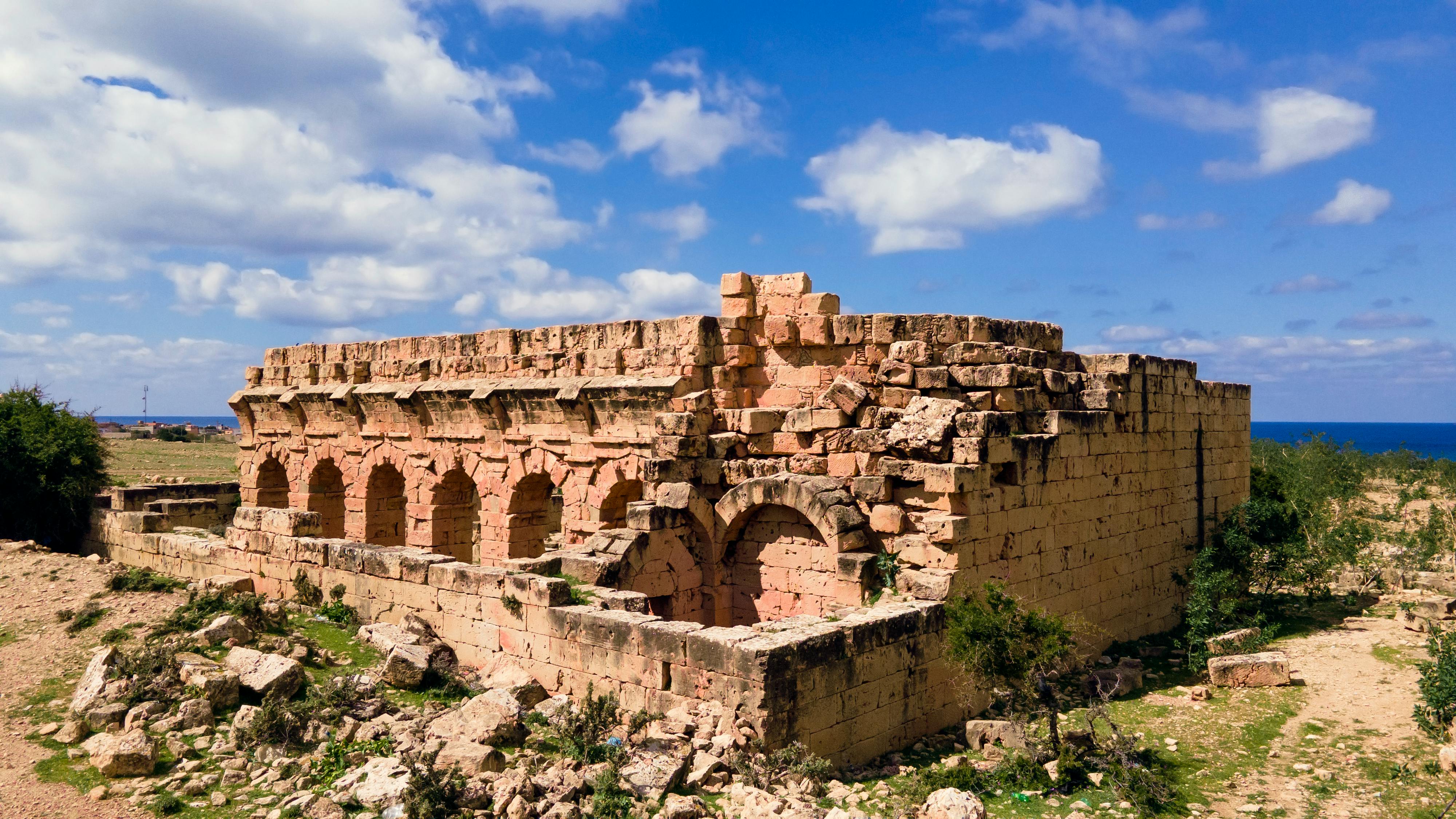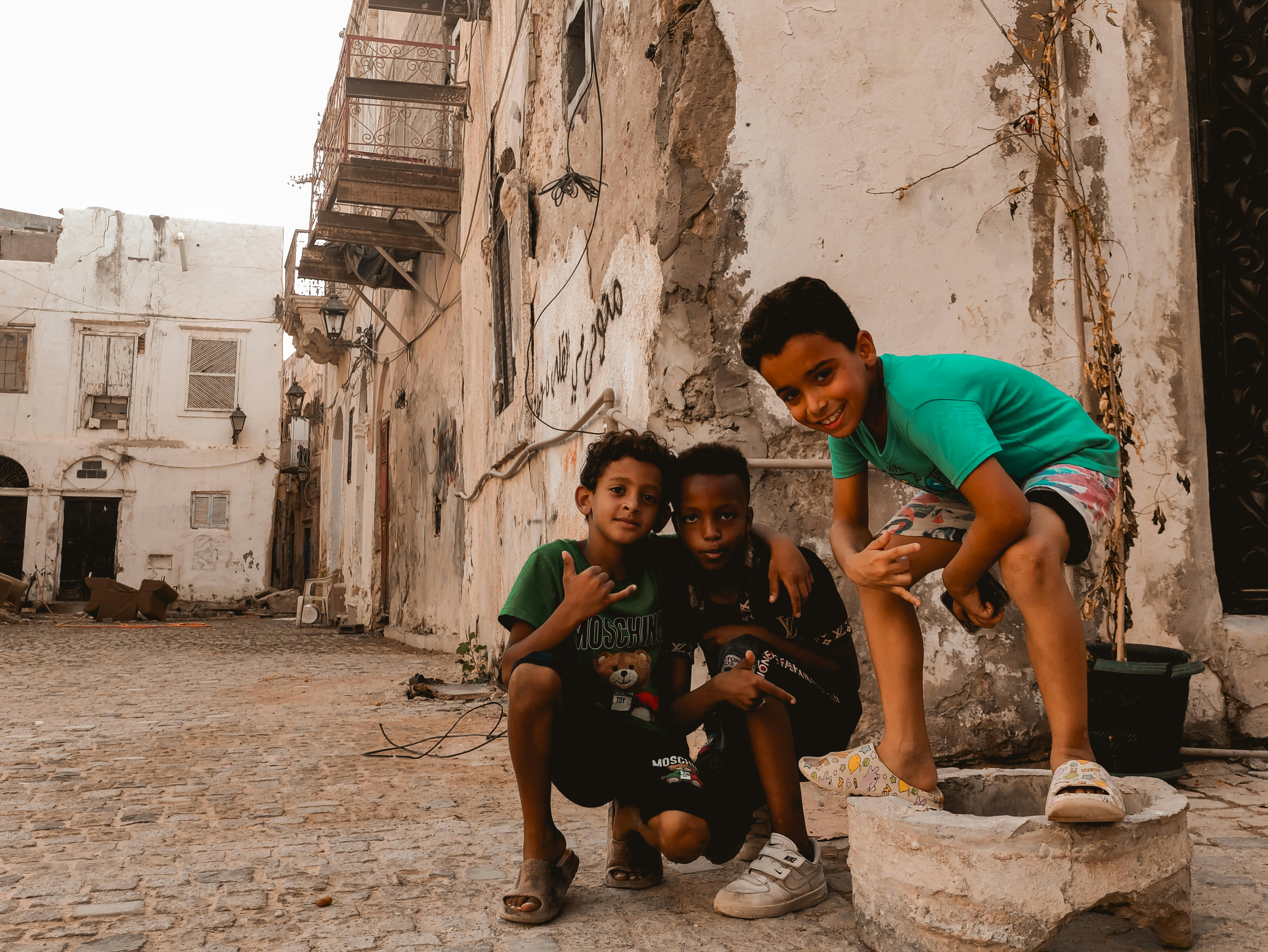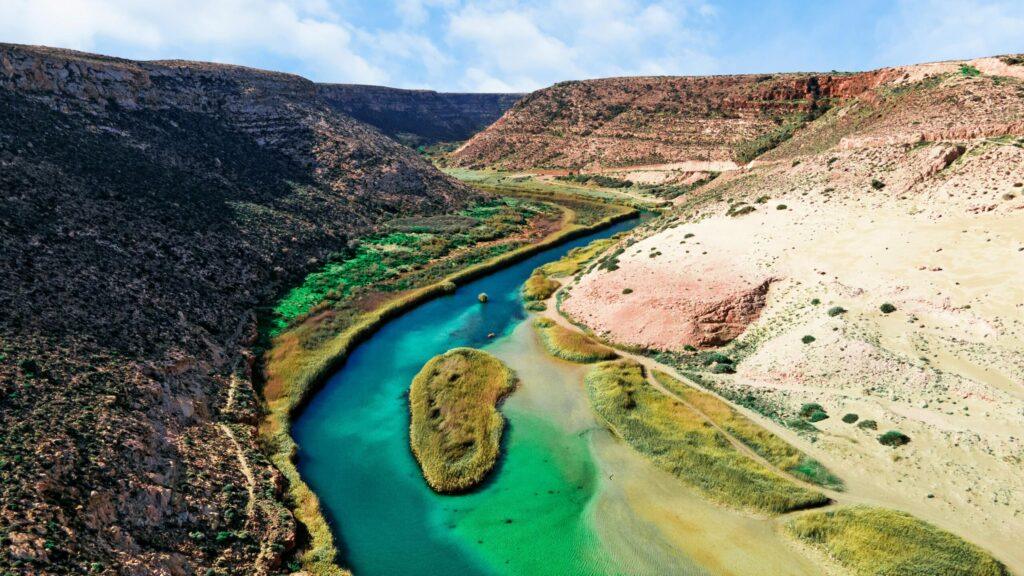Standing at the crumbling ruins of Leptis Magna, wind whipping at my hair into a maniacal frenzy, all I could feel was complete awe at the history that sat upon my shoulders. Libya, land often misunderstood and overlooked, had already stolen my heart with its rugged beauty and resilient people, richly diverse in culture. But what was best? I was doing this all on a broke budget, again proving that even the most intrepid destinations can be explored on less than a broke budget.
Backpacking in Libya is certainly not for the faint of heart. Its turbulent past and present have left their mark, and one traveling within must expect the unexpected. For those willing to make the leap, the payoffs are immeasurable: from the Sahara’s scorching desert landscapes to the souks teeming with life in Tripoli, every moment spent within Libya is one of its raw spirit and uncurbed hospitality.
In this blog, I will relate my experiences of broke backpacking through Libya-from navigating the labyrinthine corridors of Libyan bureaucracy to haggling for bargains in the local souks. Along the way, I’ll introduce you to some of the incredible people I met, the breathtaking sights I saw, and the lessons I learned about resilience, adaptability, and the true meaning of adventure. So join me on this journey into the unknown, and discover for yourself the beauty of Libya.
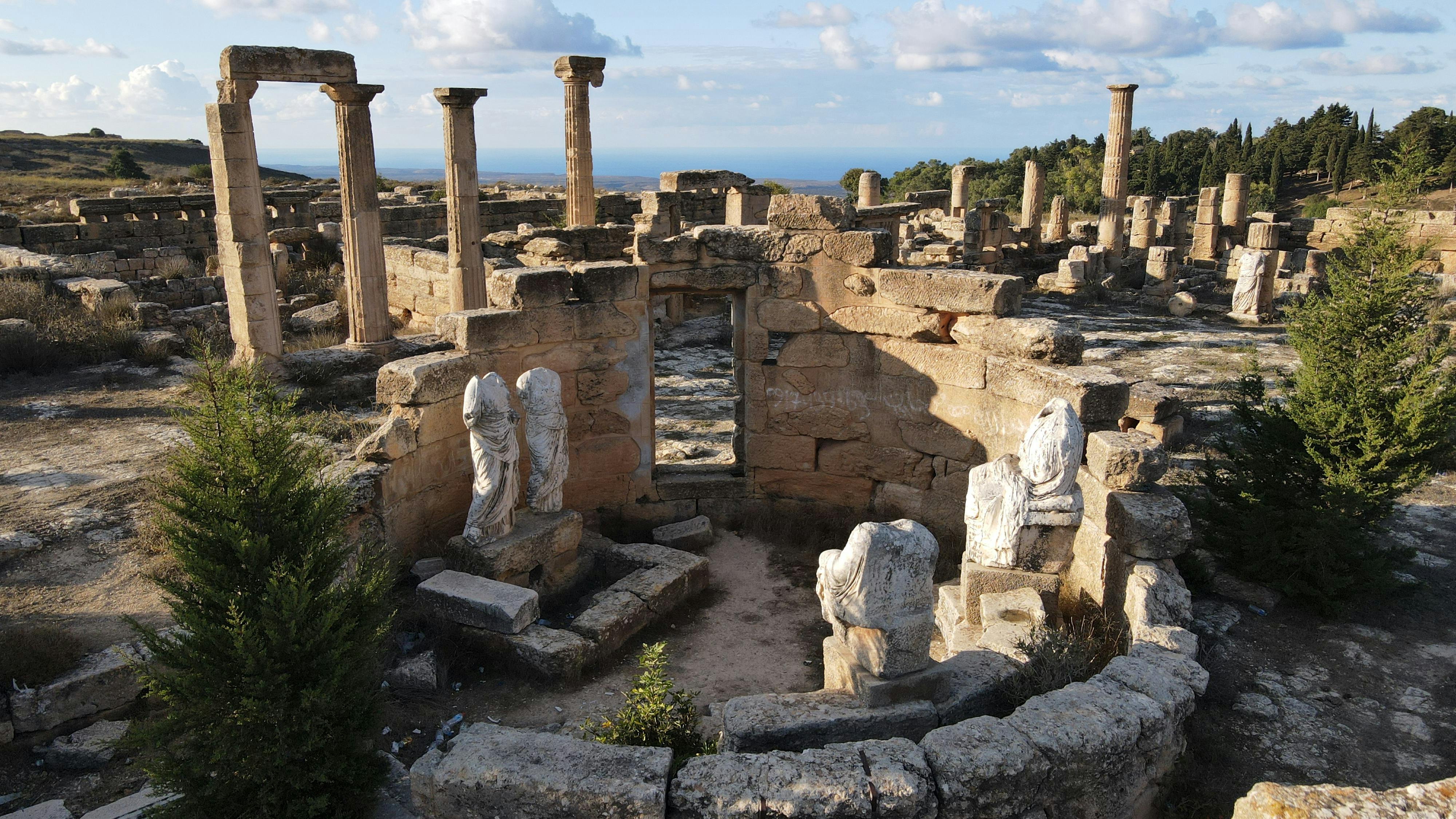
How to get there:
Libya is a country shrouded in mystery and intrigue, is often overlooked by travelers due to its complex and ever-changing entry requirements. However, for the adventurous and determined, Libya is accessible via public transportation from neighboring countries. In this blog post, we’ll break down the steps to get to Libya from Egypt, Tunisia, and Chad, using public transportation.
From Egypt:
- Cairo to Mersa Matruh: Take the bus or shared taxi (microbus) from Cairo’s Tahrir Square or the main bus station (Mawqif al-Ahram) to Mersa Matruh, a coastal town in northwestern Egypt. The journey takes around 7-8 hours and costs approximately EGP 100-150 (USD 6-10).
- Mersa Matruh to Salum: From Mersa Matruh, take a shared taxi or microbus to the Egyptian-Libyan border town of Salum. The journey takes around 2-3 hours and costs approximately EGP 50-100 (USD 3-6).
- Salum to Benghazi: After crossing the border, take a shared taxi or bus to Benghazi, Libya’s second-largest city. The journey takes around 4-5 hours and costs approximately LYD 50-100 (USD 10-20).
From Tunisia:
- Tunis to Ras Ajdir: Take the bus or shared taxi from Tunis to the Tunisian-Libyan border town of Ras Ajdir. The journey takes around 4-5 hours and costs approximately TND 20-50 (USD 6-15).
- Ras Ajdir to Zuwarah: After crossing the border, take a shared taxi or bus to the Libyan coastal town of Zuwarah. The journey takes around 1-2 hours and costs approximately LYD 20-50 (USD 4-10).
- Zuwarah to Tripoli: From Zuwarah, take a shared taxi or bus to Tripoli, Libya’s capital city. The journey takes around 2-3 hours and costs approximately LYD 50-100 (USD 10-20).
From Chad:
- N’Djamena to Faya-Largeau: Take the bus or shared taxi from N’Djamena, Chad’s capital city, to the Chadian-Libyan border town of Faya-Largeau. The journey takes around 10-12 hours and costs approximately XAF 10,000-20,000 (USD 17-34).
- Faya-Largeau to Kufra: After crossing the border, take a shared taxi or bus to the Libyan oasis town of Kufra. The journey takes around 4-5 hours and costs approximately LYD 100-200 (USD 20-40).
- Kufra to Benghazi: From Kufra, take a shared taxi or bus to Benghazi, Libya’s second-largest city. The journey takes around 6-8 hours and costs approximately LYD 200-400 (USD 40-80).
Important Notes:
- Visa requirements: Check the latest visa requirements for Libya, as they can change frequently.
- Border crossings: Be prepared for long delays and potential closures at border crossings.
- Safety: Exercise caution when traveling in Libya, as the country is still recovering from conflict.
- Transportation: Shared taxis and buses may not always be available, and schedules can be unpredictable.
Getting to Libya with public transportation requires patience, flexibility, and a sense of adventure. With careful planning and preparation, you can navigate the complexities of Libyan transportation and experience the beauty and resilience of this incredible country.
When to go:
From scorching deserts to majestic ancient ruins, Libya’s landscape is as diverse as it is breathtaking. As a broke backpacker, timing is everything, and Libya’s climate and events can greatly impact your travel experience. In this guide, we’ll break down the best times to visit Libya, highlighting the pros and cons of each season.
Spring (March to May)
- Weather: Mild temperatures (15-25°C/59-77°F) and minimal rainfall make spring an ideal time to explore Libya’s ancient ruins and coastal towns.
- Pros:
- Comfortable weather for sightseeing
- Fewer tourists compared to summer months
- Festivals like the Tripoli International Fair and the Benghazi International Book Fair take place during this time
- Cons:
- Some tourist facilities might still be closed after the winter season
- Sandstorms can occur in the desert regions
Summer (June to August)
- Weather: Scorching temperatures (30-40°C/86-104°F) and intense sunshine make summer a challenging time to explore Libya.
- Pros:
- Longer days allow for more sightseeing time
- Festivals like the Sabha International Festival and the Kufra Oasis Festival take place during this time
- Cons:
- Extreme heat can be unbearable, especially in the desert regions
- Tourist facilities might be overcrowded and more expensive
- Ramadan, the Islamic holy month of fasting, usually falls during summer, which can impact tourist activities
Autumn (September to November)
- Weather: Warm temperatures (20-30°C/68-86°F) and minimal rainfall make autumn a pleasant time to explore Libya.
- Pros:
- Comfortable weather for sightseeing
- Fewer tourists compared to summer months
- Festivals like the Tripoli International Film Festival take place during this time
- Cons:
- Some tourist facilities might start to close for the winter season
- Sandstorms can occur in the desert regions
Winter (December to February)
- Weather: Cool temperatures (10-20°C/50-68°F) and occasional rainfall make winter a relatively quiet time to explore Libya.
- Pros:
- Lower prices for tourist facilities and services
- Fewer tourists, allowing for a more peaceful experience
- Cons:
- Some tourist facilities might be closed or operate on reduced hours
- Rainfall can make some roads and sites inaccessible
Special Events and Festivals
- Ramadan: Usually falls in summer, but dates vary each year. Experience the unique atmosphere and traditions of Ramadan, but be prepared for changes in tourist activities and facilities.
- Eid al-Fitr: Celebrated after Ramadan, this festival marks the end of fasting and is a time for family gatherings and festivities.
- Libya International Festival: Takes place in autumn and features music, dance, and cultural performances from around the world.
The best time to go broke backpacking in Libya depends on your preferences and priorities. Spring and autumn offer comfortable weather and fewer tourists, while summer provides longer days and festivals, but also extreme heat. Winter is the quietest and most budget-friendly time, but some facilities might be closed. Plan carefully, and you’ll be ready for an unforgettable adventure in Libya!
Best Itineraries:
3-Day Itinerary
- Day 1: Tripoli
- Explore the Medina (Old City)
- Visit the Gurgi Mosque and the Karamanli Mosque
- Wander along the Corniche (waterfront)
- Day 2: Leptis Magna
- Take a shared taxi or bus to Leptis Magna ( approx. 2 hours)
- Explore the ancient Roman ruins
- Return to Tripoli in the evening
- Day 3: Tripoli
- Visit the National Museum of Libya
- Explore the souks (markets) for souvenirs and local goods
- Depart from Tripoli
1-Week Itinerary
- Day 1-2: Tripoli
- Explore the Medina and the Corniche
- Visit the Gurgi Mosque, Karamanli Mosque, and the National Museum of Libya
- Day 3-4: Leptis Magna and Khoms
- Take a shared taxi or bus to Leptis Magna and explore the ancient Roman ruins
- Visit the nearby town of Khoms
- Day 5-6: Benghazi
- Take a bus or shared taxi to Benghazi (approx. 10-12 hours)
- Explore the city’s Medina and the Benghazi Cathedral
- Day 7: Benghazi
- Visit the Benghazi Museum
- Depart from Benghazi
2-Week Itinerary
- Day 1-3: Tripoli
- Explore the Medina, the Corniche, and the National Museum of Libya
- Visit the Gurgi Mosque and the Karamanli Mosque
- Day 4-6: Leptis Magna, Khoms, and Sabratha
- Take a shared taxi or bus to Leptis Magna and explore the ancient Roman ruins
- Visit the nearby towns of Khoms and Sabratha
- Day 7-9: Benghazi
- Take a bus or shared taxi to Benghazi (approx. 10-12 hours)
- Explore the city’s Medina and the Benghazi Cathedral
- Day 10-14: Tobruk and the Eastern Coast
- Take a bus or shared taxi to Tobruk (approx. 4-6 hours)
- Explore the city’s Medina and the Tobruk War Cemetery
- Visit the nearby coastal towns and beaches
1-Month Itinerary
- Week 1: Tripoli and the Western Coast
- Explore the Medina, the Corniche, and the National Museum of Libya
- Visit the Gurgi Mosque and the Karamanli Mosque
- Take a shared taxi or bus to the nearby coastal towns and beaches
- Week 2: Leptis Magna, Khoms, and Sabratha
- Take a shared taxi or bus to Leptis Magna and explore the ancient Roman ruins
- Visit the nearby towns of Khoms and Sabratha
- Week 3: Benghazi and the Eastern Coast
- Take a bus or shared taxi to Benghazi (approx. 10-12 hours)
- Explore the city’s Medina and the Benghazi Cathedral
- Visit the nearby coastal towns and beaches
- Week 4: Tobruk, Kufra, and the Southern Desert
- Take a bus or shared taxi to Tobruk (approx. 4-6 hours)
- Explore the city’s Medina and the Tobruk War Cemetery
- Take a shared taxi or bus to Kufra and explore the oasis town
- Visit the nearby desert landscapes and oases
3-Month Itinerary
- Month 1: Tripoli, the Western Coast, and the Sahara Desert
- Explore the Medina, the Corniche, and the National Museum of Libya
- Visit the Gurgi Mosque and the Karamanli Mosque
- Take a shared taxi or bus to the nearby coastal towns and beaches
- Visit the Sahara Desert and explore the dunes and oases
- Month 2: Leptis Magna, Khoms, Sabratha, and Benghazi
- Take a shared taxi or bus to Leptis Magna and explore the ancient Roman ruins
- Visit the nearby towns of Khoms and Sabratha
- Take a bus or shared taxi to Benghazi (approx. 10-12 hours)
- Explore the city’s Medina and the Benghazi Cathedral
- Month 3: Tobruk, Kufra, and the Eastern Coast
- Take a bus or shared taxi to Tobruk (approx. 4-6 hours)
- Explore the city’s Medina and the Tobruk War Cemetery
- Take a shared taxi or bus to Kufra and explore the oasis town
- Visit the nearby coastal towns and beaches
- Explore the southern desert landscapes and oases
6-Month Itinerary
- Month 1-2: Tripoli, the Western Coast, and the Sahara Desert
- Explore the Medina, the Corniche, and the National Museum of Libya
- Visit the Gurgi Mosque and the Karamanli Mosque
- Take a shared taxi or bus to the nearby coastal towns and beaches
- Visit the Sahara Desert and explore the dunes and oases
- Month 3-4: Leptis Magna, Khoms, Sabratha, and Benghazi
- Take a shared taxi or bus to Leptis Magna and explore the ancient Roman ruins
- Visit the nearby towns of Khoms and Sabratha
- Take a bus or shared taxi to Benghazi (approx. 10-12 hours)
- Explore the city’s Medina and the Benghazi Cathedral
- Month 5-6: Tobruk, Kufra, and the Eastern Coast, and the Southern Desert
- Take a bus or shared taxi to Tobruk (approx. 4-6 hours)
- Explore the city’s Medina and the Tobruk War Cemetery
- Take a shared taxi or bus to Kufra and explore the oasis town
- Visit the nearby coastal towns and beaches
- Explore the southern desert landscapes and oases, including the Kufra Oasis, the Tazerbo Oasis, and the Rebiana Sand Sea
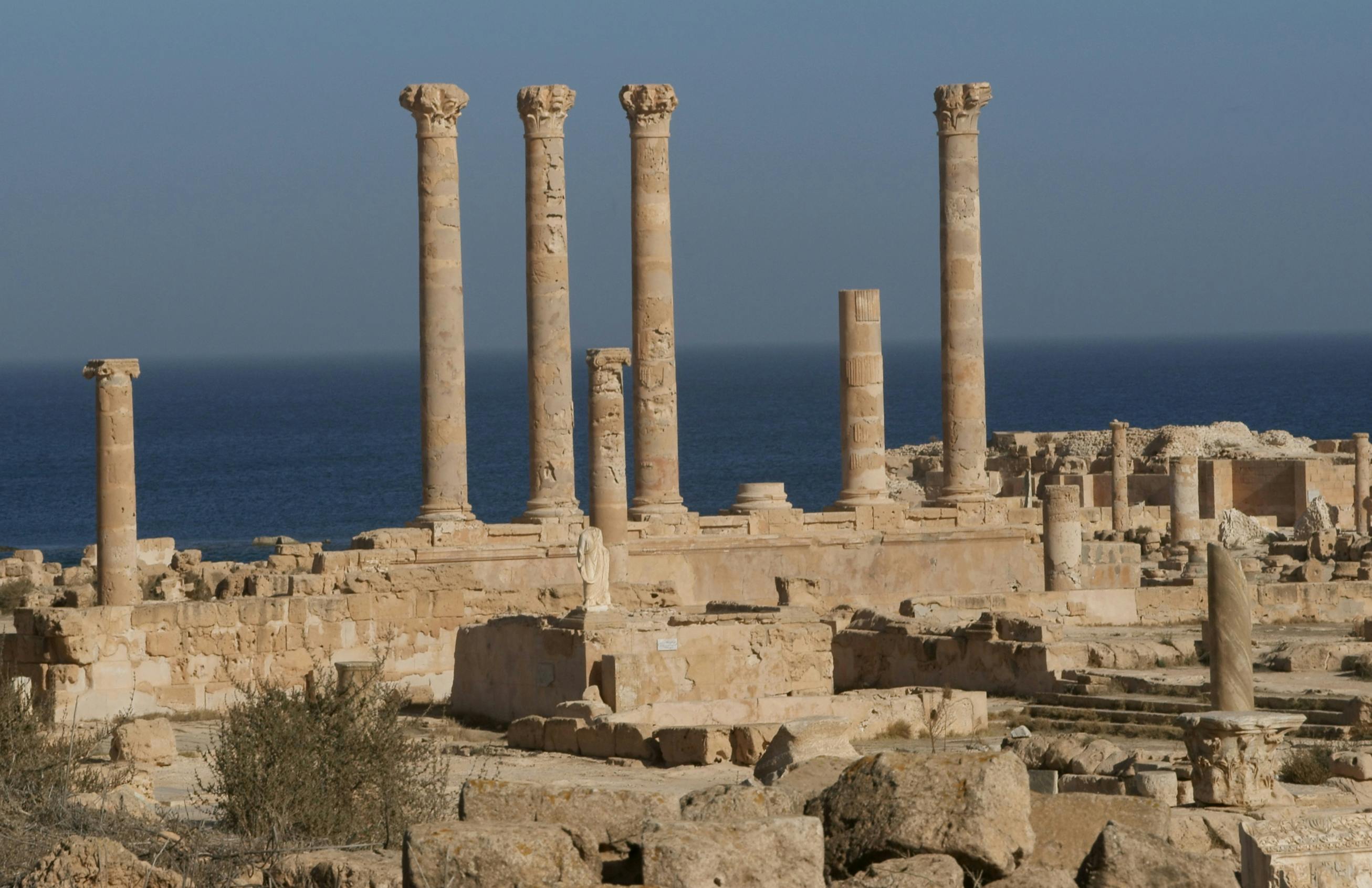
Transportation:
One of the biggest hurdles is navigating the country’s public transportation system. In this guide, we’ll break down the different modes of public transportation in Libya, including buses, shared taxis, and hitchhiking.
Buses
Libya has an extensive network of buses that connect major cities and towns. The buses are usually modern and comfortable, with air conditioning and reclining seats. However, the routes and schedules can be unpredictable, and buses often depart when full.
- Bus Companies: The main bus companies in Libya are:
- Al-Saaha Bus Company
- Al-Mahari Bus Company
- Al-Waha Bus Company
- Bus Stations: Major bus stations are located in Tripoli, Benghazi, and other large cities. These stations are usually chaotic, with many buses departing from the same location.
- Tickets: Bus tickets can be purchased at the bus station or on board. Prices vary depending on the route and company.
Shared Taxis
Shared taxis, also known as “servees,” are a popular mode of transportation in Libya. These taxis operate on fixed routes and depart when full.
- Shared Taxi Routes: Shared taxis connect major cities and towns, as well as rural areas.
- Fares: Fares are usually negotiable and depend on the route and number of passengers.
- Departure Points: Shared taxis often depart from designated points, such as bus stations or city centers.
Hitchhiking
Hitchhiking is a viable option in Libya, especially for shorter distances. However, it’s essential to exercise caution and follow local advice.
- Hitchhiking Tips:
- Be prepared for long waits and unpredictable traffic.
- Dress modestly and respect local customs.
- Learn some basic Arabic phrases to communicate with drivers.
- Avoid hitchhiking at night or in areas with high crime rates.
- Popular Hitchhiking Spots: Major highways, bus stations, and city centers are good starting points for hitchhiking.
Other Modes of Transportation
- Taxis: Private taxis are available in major cities, but prices can be steep.
- Renting a Car: Renting a car is possible, but driving in Libya can be challenging due to poor road conditions and aggressive driving.
- Camel Rides: For a unique experience, consider taking a camel ride through the desert.
Safety Considerations
- Conflict Zones: Avoid areas with ongoing conflict or military activity.
- Crime: Be cautious of petty theft and scams, especially in crowded areas.
- Traffic: Driving in Libya can be hazardous due to poor road conditions and aggressive driving.
Public transportation in Libya can be unpredictable, but with patience and flexibility, travelers can navigate the country’s buses, shared taxis, and hitchhiking opportunities. Remember to exercise caution, respect local customs, and stay informed about local conditions. Happy travels!
Top things to do:
Tripoli Area
- Medina (Old City): Explore the narrow streets, historic mosques, and bustling souks.
- Gurgi Mosque: Admire the stunning architecture and beautiful tile work.
- Karamanli Mosque: Visit this historic mosque and learn about its significance.
- National Museum of Libya: Discover Libya’s rich history and cultural heritage.
- Corniche (Waterfront): Enjoy the views of the Mediterranean Sea and the city.
- Tripoli Castle: Explore the historic castle and enjoy the views of the city.
- Al-Saraya Al-Hamra: Visit this historic palace and learn about its significance.
- Tripoli Zoo: Relax and enjoy the animals at the zoo.
Leptis Magna and Khoms Area
- Leptis Magna: Explore the ancient Roman ruins, including the amphitheater and forum.
- Khoms: Visit this charming coastal town and enjoy its beaches and historic sites.
- Sabratha: Explore the ancient Roman ruins and enjoy the stunning views of the sea.
- Zliten: Visit this historic town and explore its ancient ruins and mosques.
- Misrata: Explore the city’s historic center and visit the Misrata Museum.
Benghazi Area
- Medina (Old City): Explore the narrow streets, historic mosques, and bustling souks.
- Benghazi Cathedral: Visit this historic church and learn about its significance.
- Benghazi Museum: Discover the city’s history and cultural heritage.
- Tahrir Square: Explore the city’s central square and admire the surrounding architecture.
- Benghazi Lighthouse: Enjoy the views of the city and the sea from the lighthouse.
- Sidi Khreibish Mosque: Visit this historic mosque and learn about its significance.
Tobruk Area
- Tobruk War Cemetery: Pay respects to the soldiers who fought and died in World War II.
- Tobruk Medina: Explore the narrow streets, historic mosques, and bustling souks.
- Tobruk Beach: Enjoy the stunning views of the Mediterranean Sea and relax on the beach.
- Tobruk Port: Explore the historic port and admire the surrounding architecture.
- Ras al-Abyad: Visit this picturesque coastal town and enjoy its beaches and historic sites.
Kufra Area
- Kufra Oasis: Explore the palm groves, hot springs, and historic sites.
- Tazerbo Oasis: Visit this picturesque oasis and enjoy its natural beauty.
- Rebiana Sand Sea: Explore the stunning sand dunes and enjoy the tranquility of the desert.
- Kufra Airport: Visit the historic airport and learn about its significance during World War II.
- Tibesti Mountains: Explore the stunning natural beauty of these mountains and enjoy trekking and hiking.
Ghadames Area
- Ghadames Old Town: Explore the narrow streets, historic mosques, and traditional Berber architecture.
- Ghadames Museum: Discover the town’s history and cultural heritage.
- Ghadames Oasis: Explore the palm groves and hot springs.
- Ghadames Desert: Explore the stunning sand dunes and enjoy the tranquility of the desert.
Nalut Area
- Nalut Old Town: Explore the narrow streets, historic mosques, and traditional Berber architecture.
- Nalut Museum: Discover the town’s history and cultural heritage.
- Nalut Granaries: Visit these ancient Berber granaries and learn about their significance.
- Nalut Desert: Explore the stunning sand dunes and enjoy the tranquility of the desert.
Akakus Mountains Area
- Akakus Mountains: Explore the stunning natural beauty of these mountains and enjoy trekking and hiking.
- Wadi Tanezzuft: Explore this stunning valley and enjoy the natural beauty of the area.
- Akakus Rock Art: Visit these ancient rock art sites and learn about their significance.
Other Areas
- Cyrene: Explore the ancient Greek ruins and enjoy the stunning views of the sea.
- Apolonia: Visit this ancient Greek city and explore its ruins.
- Tukrah: Explore this charming coastal town and enjoy its beaches and historic sites.
- Derna: Visit this historic town and explore its ancient ruins and mosques.
- Bayda: Explore this charming town and enjoy its natural beauty and historic sites.
Food:
Libyan cuisine is a combination of Mediterranean, African, and Middle Eastern flavors because of the country’s strategic location and cultural heritage. For any poor backpacker, it may please you to know that eating in Libya can be affordable and delicious. Traditional Libyan dishes usually start with simple ingredients such as olives, olive oil, garlic, and tomatoes, which are available at cheap prices.
Food in Libyan towns and cities is available at small, family restaurants or as street stalls; traditional dishes of very good value are easy to find. The most well-known is probably shawarma-a delicious sandwich containing thin, cut meat served with vegetables and tahini on a crusty bread roll-or you can get falafel, kebabs, and all the regular Middle Eastern fayre. These foods are delicious and most of them come at a very cheap price; starting from around 2 to 5 LYD, that is $0.50 to $1.50. Mealtimes in Libya are great opportunities for bonding and socializing. You can expect invitations to share one or two meals with locals during your stay, a common gesture in extending hospitality in this country. Traditional Libyan meals are composed of several small courses to begin with, such as olives, cheese, and flatbread, followed by a meat course, like fish, along with rice, vegetables, and sauces. Food is shared in a group setting: people gather around the table to share not only the food but also to converse with each other.
One of the most iconic Libyan dishes includes couscous, a staple North African meal of steamed semolina flour, generally served with vegetables, meat, and sauces. You’ll also find a variety of soups, stews, and tagines, slow-cooked in clay pots with aromatic spices and herbs. Libyan cuisine is also known for its sweet treats, such as baklava, kunafeh, and ma’amoul, which are often served with tea or coffee. The above desserts are delicious and at a very reasonable price: 5-10 LYD per unit, that is approximately 1-2 USD.
Food: For the utterly broke backpacker, eating out in Libya can go as low as 5-10 LYD ($1-$2 USD) for a meal. In mid-range restaurants, you can have great food for 20-30 LYD ($4-$6 USD). Obviously, this depends on the place, and thus far, Tripoli and Benghazi remain the most costly cities while towns and the countryside are pretty cheap.
Apart from eating out, one can also stock foodstuffs from local markets and sometimes supermarkets. Freshly sold produce, bread, and dairy products ensure that fresh food is available at low cost; thus, one has very little problem preparing your meal yourself. Many hostels and low-budget hotels include a kitchen to allow cooking oneself and save money accordingly. In fact, purchasing ingredients at local markets and making your own meals can be quite cheap, with prices ranging from about 5-10 LYD ($1-$2 USD) for basic ingredients.
Libyan cuisine is hugely influenced by the Mediterranean coastline that borders the country, too, and you can find most kinds of fresh seafood in the coastal towns and cities. You’ll also find different types of seafood dishes such as grilled fish, seafood stew, and fish tagines, served with rice, vegetables, and sauces. These are not only delicious but also very affordable, ranging from 10 to 20 LYD ($2-$4 USD) or even less.
In Libya, tea is part of the culture, and you’ll often be offered a cup of tea when visiting local families or businesses. Libyan tea is strong and sweet, made with black tea leaves and sugar. You can also find a number of coffee shops and cafes serving traditional Arabic coffee and tea, as well as modern coffee drinks. These cafes and coffee shops are the best places for relaxation. Some of them offer one serving of coffee or tea at very affordable prices, around 5-10 LYD (1-2 USD).
All in all, Libya is a unique and delicious destination when it comes to food. There are many traditional dishes and ingredients you can familiarize yourself with. In Libya, it is possible for a broke backpacker to eat quite affordably and enjoy themselves while having good cultural and hospitality experiences. Whether trying street food, dining in local restaurants, or cooking for yourself, Libyan cuisine will have something to offer every kind of budget and taste.
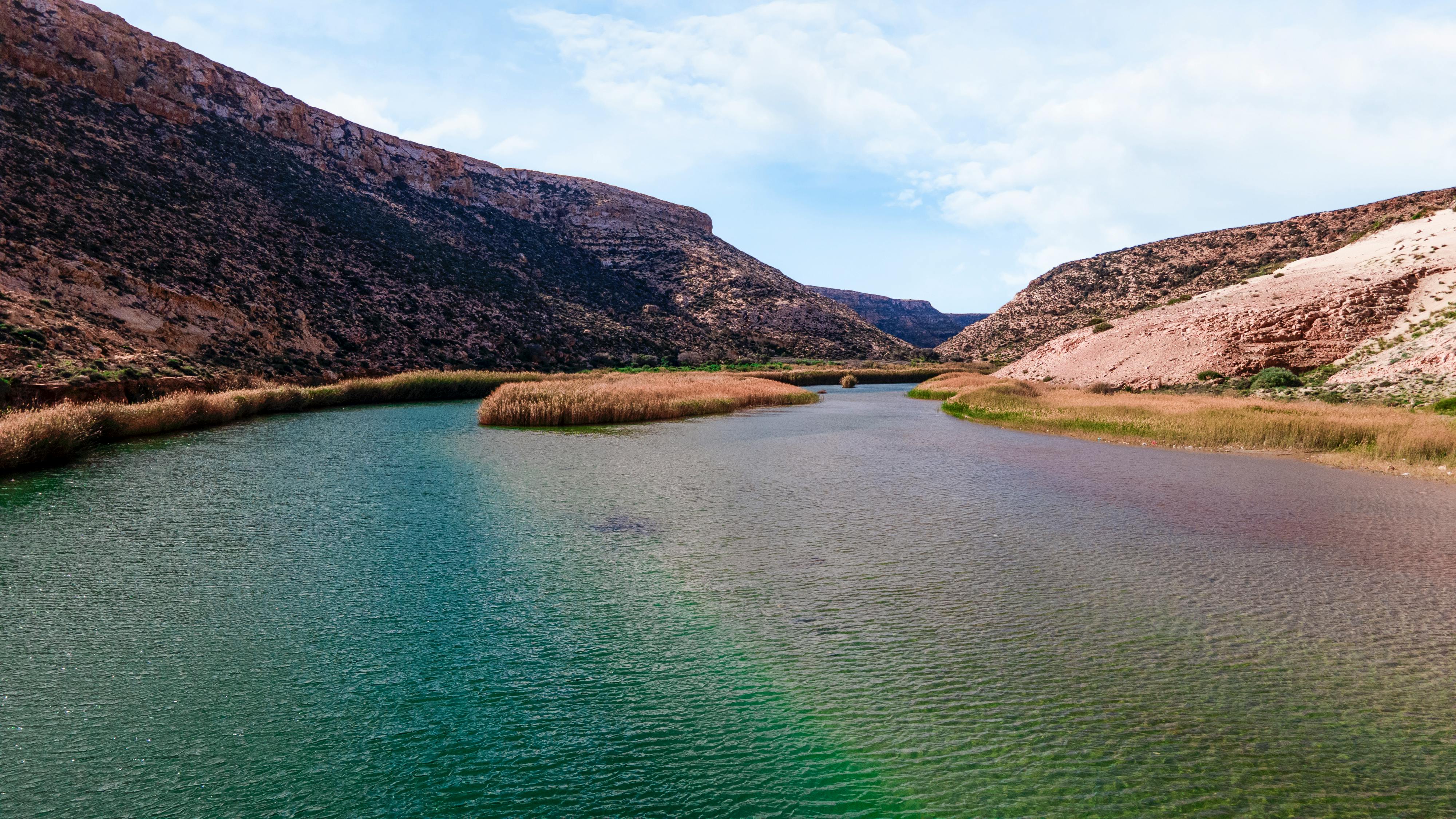
Culture:
The rich and multicolored tapestry of the Libyan culture threads in the features of Libya’s strategic location with complex history and resilient people. With influences from various civilizations-from ancient Phoenicians and Romans to the Ottoman Empire and Italian colonization-a unique blend was created by nature at the crossroads of Africa, Europe, and the Middle East. This is also reflected in its architecture, food, music, and traditions.
Traditional Libyans are very friendly and welcoming, often beginning any encounter with a firm handshake or peck on the cheek and offering sweet tea or coffee. In the cultural tradition of Libya, a deeply ingrained respect for one’s guest is an overwhelming rule of good behavior and good manner; one can feel this everywhere through the multitude of customs and rituals within the country. During the month of Ramadan, the Islamic holy month of fasting, for example, the Libyans unite together with family and friends to break the fast and keep up into the night socializing.
Another characteristic of Libyan culture is the feeling of community and social solidarity. The big families in rural areas stay in communities that are often tight-knit; neighbors and relatives help keep traditional ways of life intact by cooperating in several areas. This is also emphasized by several festivals and feasts around the country, such as the Eid al-Fitr and Eid al-Adha, when people get together for prayers, feasting, and giving thanks.
Most indicative to the point, however, is the rich musical and dancing traditions of the country. Traditional Libyan music, with the oud, qraqeb, and darbuka heading the list among many others, is a special blend of African, Arab, and Mediterranean styles. Some traditional dances include the habka and the aghani; these are common during weddings and other celebrations, characterized by footwork and rhythmic movements.
Traditional Libyan art and craftsmanship are highly regarded, too, and weaving, pottery, and metalwork are considered the traditional crafts passed down through generations. The country is host to several museums and cultural centers, such as the National Museum of Libya and the Tripoli Museum, which reflect the rich cultural heritage that the country has, from ancient artifacts to modern art.
Libyan culture has, however, always been resilient and very vibrant despite many challenges and conflicts facing the country. It is actually a country with a thriving literary scene that boasts several leading writers and poets such as Sadiq Neihoum and Khaled Mattawa who contribute to the country’s rich cultural heritage.
More recently, Libyan culture has been shaped by its rapid modernization and urbanization. Young Libyans are increasingly using modern technologies and social media for self-expression and reaching out to other communities. The result is a unique blend of tradition and modern influences, with artists, musicians, and writers creatively pushing the boundaries of culture and innovation in Libya.
Traditional attire tells a lot about the cultural heritage of the country. Men generally wear the Libyan national dishdasha, which is a long white robe, while women wear the hijab, a type of headscarf. These traditional garments are usually worn at weddings and festivals on special occasions as a sign of Libyan cultural identity.
Food is an essential element in Libyan culture, where foodstuffs like couscous, shawarma, and kebabs feature. These are mainly enjoyed everywhere throughout the country. Many meals start or conclude with sweet tea or a kind of coffee known as gahwa, generally containing spice; they are accompanied by a spicy chili pepper paste known as harissa.
Besides its rich cultural heritage, Libya also has a number of key cultural institutions, which include the Libyan National Theater and the Tripoli International Fair. These provide an important platform for both Libyan culture and arts and are very instrumental in showcasing the skills of local artists and performers.
Overall, Libyan culture is a rich and complex tapestry interwoven with threads of history, tradition, and modernity. Despite all the challenges and conflicts the country has gone through, Libyan culture remains very vibrant and resilient, with the country’s people continuing to show their culture through music, art, and literature. It is for this reason that Libya offers a very unique and interesting cultural experience: from the ancient ruins of Leptis Magna to the bustling streets of Tripoli, something for every visitor.
Its cultural heritage is also reflected in various festivals and celebrations that occur throughout the country, including the Tripoli International Festival, which features the country’s music, dance, and theater. Such festivals provide a platform for local artists and performers to show off their talents and offer a glimpse into Libyan culture and traditions not found elsewhere.
The culture of Libya is a very rich and diverse tapestry made of threads of history, tradition, and modernity. This unique blend of African, Arab, and Mediterranean influences makes the Libyan culture one of the most fascinating and unforgettable experiences that have something for every visitor. From history, music, and art to literature, Libya has something to offer, and its warm and welcoming people are always more than eager to share.
Accommodations:
As a poor backpacker, Libya is challenging but worth it. One of the most exciting things about traveling around Libya is staying in some special, crazy, amazing hostels that offer truly unforgettable experiences. But you really need to take that risk to book those super cheap options if you’re going to truly dive into the culture and have the most genuine experience.
Accommodation in Libya is probably most interesting if you consider the cheapest type of accommodation like hostels, guesthouses, and low-budget hotels-usually family-run and giving a real insight into Libyan daily life. You will find yourself sitting and sharing your room with the locals, enjoying traditional cuisine, and holding heated debates about politics and culture or life in general.
The possibility of staying in these economy-type accommodations gives one an opportunity to get a feel of the local culture firsthand. You end up attending a traditional wedding, take part in a heated debate over Libya’s future, or share sweet tea with your hosts-all those things that are eternal, remaining in your memory for a long time after leaving Libyan territory.
Of course, this means that budget hostels and guesthouses will equally require flexibility, plus a preparedness to accept local ways of doing things. Rooms can be Spartan, showers cold, and meals plain. But if you are prepared to rough it, going with the flow will reward you with a truly unforgettable experience that makes your Libya travel so uniquely different.
Another positive side of staying in hostels and guesthouses is that you are often at the center of all action. Budget-friendly accommodations are normally found in old medinas, the pulsating markets, or the dynamic quarters, which it will be very easy to get into action – the sights, sounds, and smells of Libya.
Tripoli, Benghazi, or other Libyan cities-while strolling in the streets, one can come across countless opportunities to stay in unique, crazy, and amazing hostels. Each of these, be it a crumbling colonial-era building or a family-run guesthouse, represents a story to be told and its brand of Libyan hospitality.
You might be lodged in a hostel that was once an old palace of the Ottoman era, complete with all the work in tiles and other ornamented furnishings. You could be placed in some small, family-run guesthouse where the owners treat you like family and give you delicious home-cooked food.
Whatever your experience, you can be sure that staying in cheap hostels and guesthouses in Libya will be an adventure you’ll never forget. From the very arrival, you will get yourself into the local culture and the way of life; you’ll have the opportunity to see things which most tourists will never get to see.
So, if you’re that broke backpacker looking to experience Libya with so much in store, take a leap of faith and book your cheapest options. You might just find great experiences, crazy stories, and lifetime memories on the way. Rich in culture, awesome landscapes, and warm-hearted hospitality, Libya will leave you in awe and wanting more.
Traveling throughout Libya, you will notice that low-cost guesthouses and hostels are actually more authentic, full of cultural immersion, a place where locals and travelers alike share stories and meals over many laughs. These are the places that show the real Libya away from tourist traps and commercial hotels.
So take a chance and stay in a cheap hostel or guesthouse in Libya; it just might be the best thing you will ever do. A quirky amalgamation of African, Arab, and Mediterranean cultures, Libya will surprise and delight you every moment. And with its friendly and warm people, whatever place you choose to lodge in, you will be made to feel at home.
Nightlife:
Nightlife in Libya is unique and fascinating; it forms part of the culture in Libya. Though the country remains conservative, one of the best nightlife scenarios worth being explored is that of Libya. Starting from the time the sun sets over the Mediterranean coast, cities such as Tripoli and Benghazi get converted into streets filled with music and laughter.
Nightlife in Libya generally features social gatherings and family functions. Many occasions, such as weddings, birthdays, and so on, are marked by late-night parties with music, food, and drink flowing without hindrance. This is, in fact, a good opportunity to experience Libyan hospitality and culture firsthand, for which visitors are mostly welcomed with open arms.
Despite everything, the nightlife in Libya isn’t hassle-free. The strict country rules and conservative social mindset present difficulties for visitors in order for them to find some places representing nightspots. Besides that, the situation of security is unpredictable in this country, and one needs to be very careful every time while traveling at night.
Despite these challenges, Libya’s nightlife scene is slowly starting to evolve. In recent years, a number of hip bars, clubs, and lounges have opened in major cities, catering to a younger, more cosmopolitan crowd. These venues often feature live music, DJs, and other entertainment, offering a unique glimpse into Libya’s emerging nightlife scene.
Probably the most intriguing thing that corresponds to Libya’s nightlife is the way it reflects the country’s cultural heritage. In general, traditional Libyan music and dances are widely performed at nightlife events, so every foreign guest has a good opportunity to get acquainted with all the richness of this culture. Many nightlife facilities try to reflect the peculiar architectural Libyan style, featuring tile inlays, ornate furnishings, and other typical components of the traditional decorative motive.
At night, Libya’s cities become alive with pulsating energy, their streets filled with people of all ages laughing and chatting and enjoying the cooler air of night. Visitors can easily share in the fun by attending a traditional Libyan wedding, visiting a local nightclub, or simply walking the streets to see and hear the sights and sounds.
On the whole, the nightlife of Libya, however small, is one intriguing face of the country’s culture. Though Libya may still fall behind other countries in terms of Libya’s nocturnal life, it will most definitely give insight into a country forging ahead in emerging cultural identity. Richly cultural, with a buzzing atmosphere and warm hospitality, it is an experience that definitely should not be missed in Libya’s nightlife.
As visitors delve deep into Libya for its nightlife, they will realize that hidden delights and surprises will always await them. Traditional Libyan music and dancing to the modern bars and clubs-Libya’s night life has something in store to cater to every taste and preference. And with people so warm and welcoming, one is always at home where one goes.
Libyans make their nightlife mirror the resilience and determination of the country. Despite the challenges and hardships faced by the country, the Libyans find ways to come together and celebrate life. This is a very inspiring spirit of resilience and determination; one cannot help but get swept up in the energy and enthusiasm of the Libyan people.
As night wears on, Libya’s cities take on a kind of magic: stars twinkling above, the throb of the music pounding across the air, and laughter and chatter filling the streets. Visitors can lose themselves to the magic of the night in Libya and find beauty and a sense of wonder in Libya’s nightlife.
It’s about Libya’s spirit and resilience in the end. However hard the trials, however scarce the hardships for this country, Libyans will always find a way to come together and celebrate life. With its rich cultural heritage, vibrant energy, and warm hospitality, the nightlife scene in Libya is surely one experience that will remain forever etched in the memories of its visitors.
The more visitors get to the nightlife of Libya, the more they get into a world of interesting contrasts. While conservative social mores and inflexible laws make it difficult for visitors to find nightlife options that appeal to their tastes, on the other hand, the emerging cultural identity and growing cosmopolitanism give rise to a new generation of trendy bars, clubs, and lounges that redefine the country’s nightlife.
From a very cultural point of view, tradition faces modernity, and in this way, the Libyan music scene represents a singular mixture of traditional Libyan music and styles from the modern era. For tourists visiting here, experiencing the live performances of local music at any of these places is common. Libyan instruments like the oud and the qraqeb can be mixed with electronic modern music in the most astonishing way in this true expression of the cultural diversity of Libya.
The nightlife scene of Libya is also vibrant in its energy and warm reception. The locals are ever so proud to share their culture and traditions with visitors, as the visitors are welcomed with open arms. That warmth of reception finds reflection in the many places that constitute its nightlife, with traditional Libyan food and drinks being the standard offer.
Backpacking Libya costs:
Daily Budget Breakdown
Accommodation
- Hostel dorm: 5-10 LYD ($1-2 USD) per night
- Budget hotel: 20-30 LYD ($4-6 USD) per night
Food
- Street food: 2-5 LYD ($0.50-1.50 USD) per meal
- Mid-range restaurant: 10-20 LYD ($2-4 USD) per meal
- Groceries: 10-20 LYD ($2-4 USD) per week
Transportation
- Local transportation: 1-2 LYD ($0.25-0.50 USD) per ride
- Long-distance bus: 20-50 LYD ($4-10 USD) per trip
Attractions
- Museums: 5-10 LYD ($1-2 USD) per person
- Historical sites: 10-20 LYD ($2-4 USD) per person
Miscellaneous
- Snacks and drinks: 5-10 LYD ($1-2 USD) per day
- Souvenirs: 10-20 LYD ($2-4 USD) per person
Total daily budget: 50-100 LYD ($10-20 USD) per day
Weekly Budget Breakdown
Accommodation
- Hostel dorm: 350-700 LYD ($70-140 USD) per week
- Budget hotel: 1,400-2,100 LYD ($280-420 USD) per week
Food
- Street food: 140-350 LYD ($28-70 USD) per week
- Mid-range restaurant: 700-1,400 LYD ($140-280 USD) per week
- Groceries: 100-200 LYD ($20-40 USD) per week
Transportation
- Local transportation: 70-140 LYD ($14-28 USD) per week
- Long-distance bus: 200-500 LYD ($40-100 USD) per week
Attractions
- Museums: 35-70 LYD ($7-14 USD) per week
- Historical sites: 70-140 LYD ($14-28 USD) per week
Miscellaneous
- Snacks and drinks: 35-70 LYD ($7-14 USD) per week
- Souvenirs: 70-140 LYD ($14-28 USD) per week
Total weekly budget: 2,100-4,200 LYD ($420-840 USD) per week
Please note that these estimates are rough and can vary depending on your personal spending habits and exchange rates. Additionally, prices may be higher in larger cities like Tripoli and Benghazi.
Conclusion:
As I reflect on my journey through Libya as a broke backpacker, I am reminded of the incredible resilience and hospitality of the Libyan people. Despite the country’s tumultuous past and present, Libya remains a destination that is ripe for exploration and discovery.
From the worn-out ruins of Leptis Magna to the animated streets of Tripoli, Libya is a country soaked in history, culture, and natural beauty. It is, however, the people of Libya that truly make this country special-their bright smiles, generous hearts, and infectious enthusiasm for life bear evidence to the power of human bonding and community.
Generally being a rather poor backpacker, I’d found the very thought of travelling in Libya quite daunting-but it rapidly transpired this isn’t just a country which is accessible to travel in-it is decidedly cheap, also. From street food up to guest houses and hostels, there are stacks of options available for those travelers on tight budgets in Libya.
Of course, travel in Libya is not devoid of any challenges. The security situation is sometimes volatile in the country, and any visitor must always take due care and respect customs and traditions. But to those ready to plunge into this grand country, certainly, the rewards outweigh the risks.
As I reflect on my time in Libya, I feel utterly wowed, grateful, and amazed. It is not an easy country to travel in, nor is it a conventional destination, but it is certainly one of the most rewarding. If you are a broke backpacker with a penchant for truly unusual and unforgettable adventures, I cannot recommend Libya highly enough.
